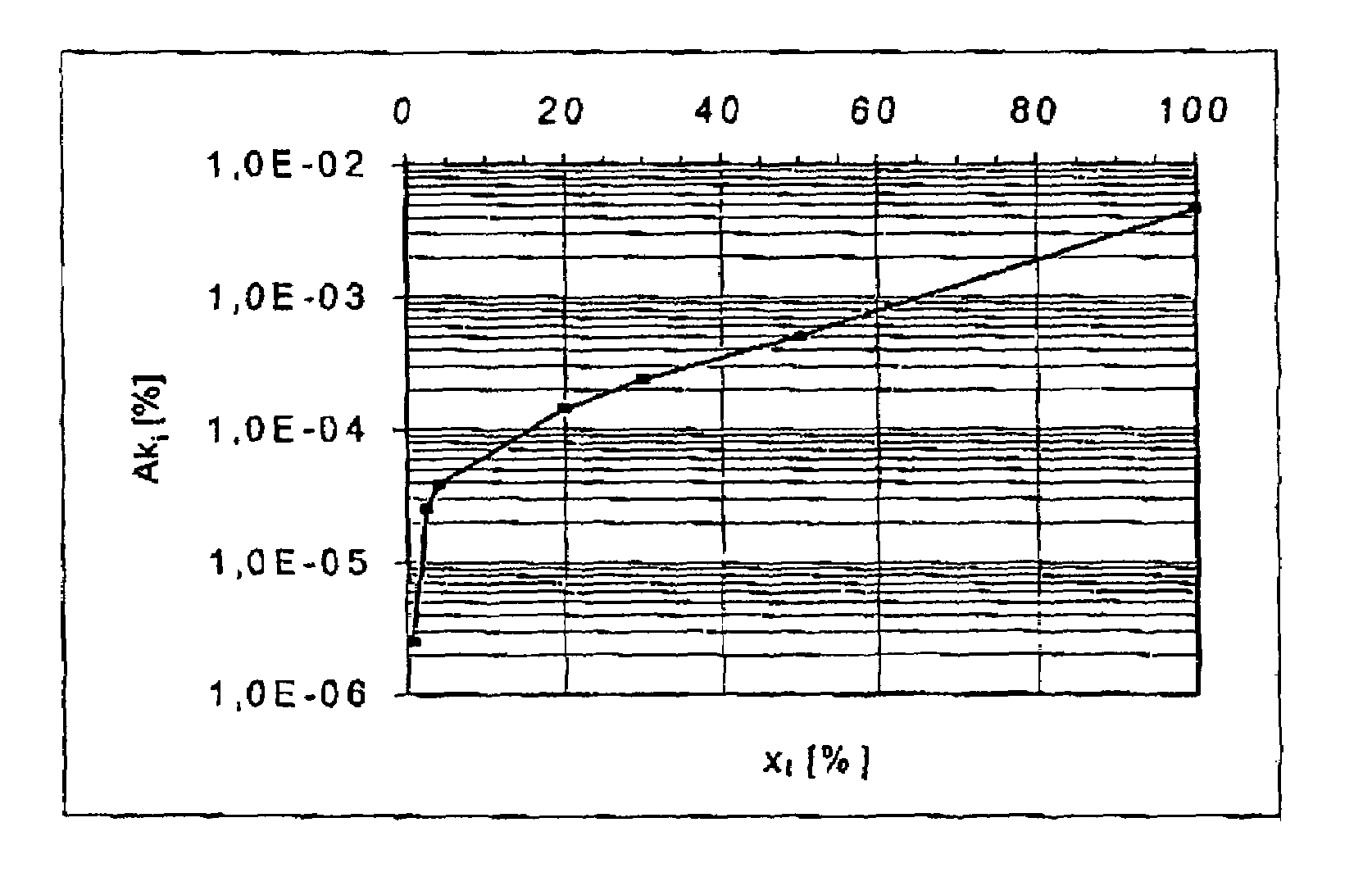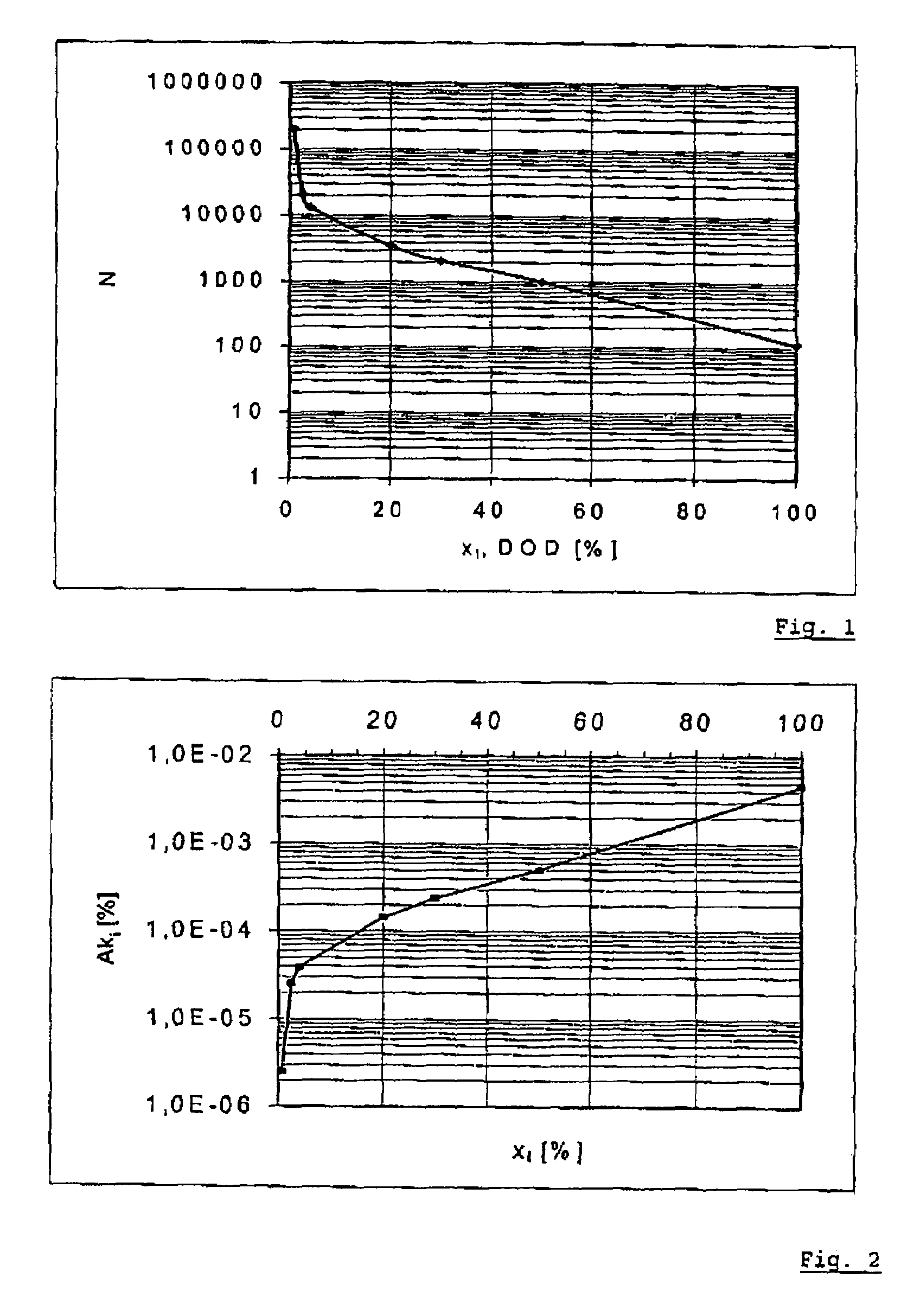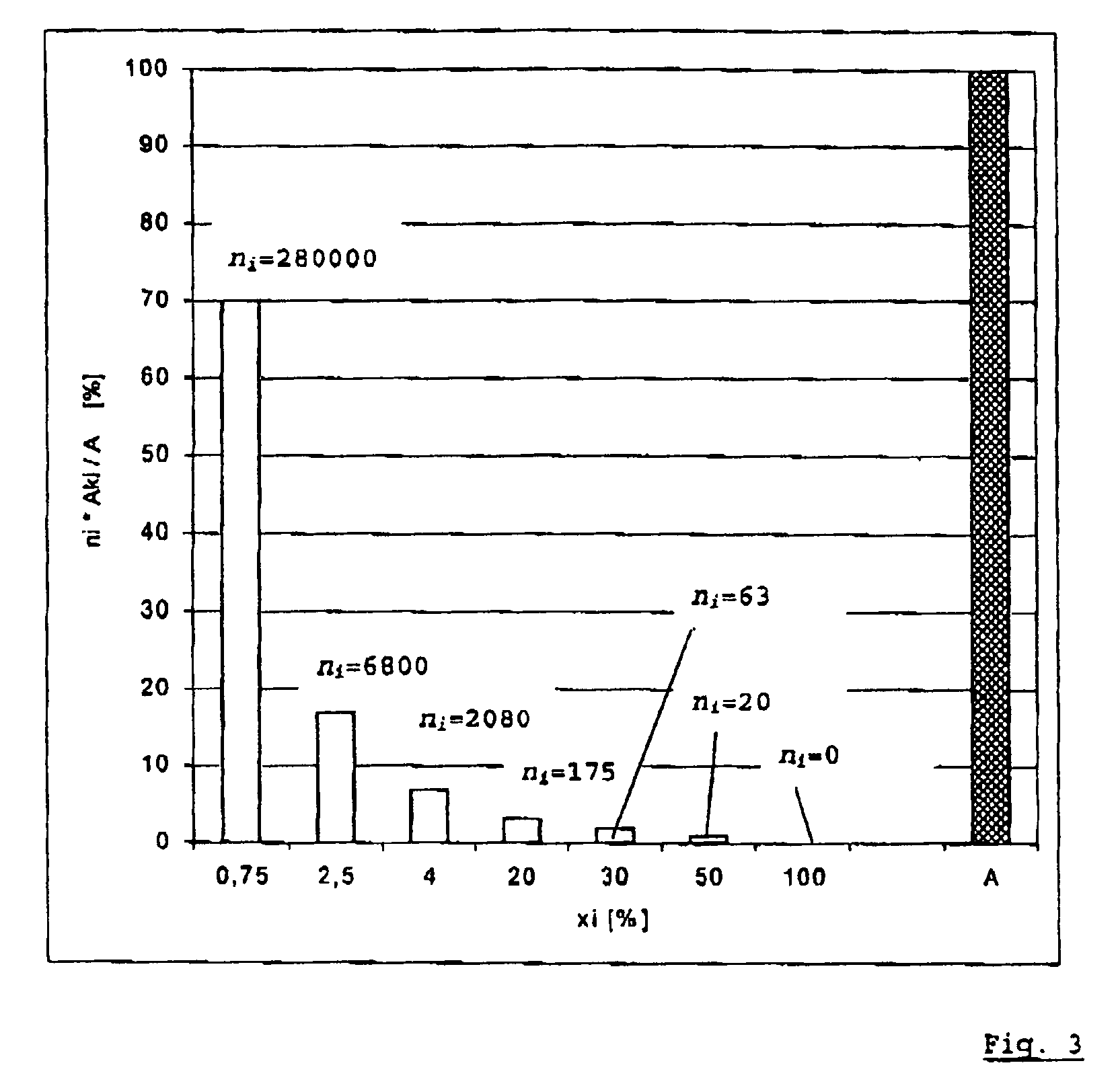Method for determining the deterioration of a battery
a battery and deterioration technology, applied in the field of battery condition monitoring, can solve the problem of comparatively complex procedur
- Summary
- Abstract
- Description
- Claims
- Application Information
AI Technical Summary
Benefits of technology
Problems solved by technology
Method used
Image
Examples
numerical example 1
[0052]The following is a detailed description of the deterioration A of a lead battery, using a numerical example.
[0053]In this context, the cycle life curve of a lead battery having value pairs (xi, yi) is given analogously to the diagram in FIG. 1. In this context, these value pairs are found in columns 1 and 2 of Table 1 shown below. Partial cycles zi are determined from cycles yi in column 2 of Table 1 according to the relationship in equation (3). Characteristic deterioration value Aki, as is shown in column 4 of Table 1, can then be calculated from these partial cycles zi according to equation (4).
[0054]
TABLE 11234xiyiziAki(DOD)(cycles)(partial cycles)(characteristic deterioration value)1001202400.41666750120024000.04166730200040000.02500020350070000.0142861012000240000.004167520000400000.0025003500001000000.001000
[0055]
TABLE 2123xiniAi in [%](DOD)(number of partial cycles)(deterioration component)10072.9250110.4630631.58201682.40108053.355599314.9836920169.20deterioration A i...
numerical example 2
[0058]In the following, deterioration A of a nickel-metal hydride battery is exemplarily described with reference to a further, more detailed numerical example. This time, weighting factors ƒi were included in the exemplary calculation as well, without intending to limit the use of weighting factors ƒi to nickel-metal hydride batteries.
[0059]The numerical example 2 mentioned is now explained analogously to numerical example 1. Analogous to Table 1 already explained above, the corresponding values for xi, yi, zi and Aki are listed in Table 3. They are derived analogously to the values in Table 1 using equations (3) and (4).
[0060]
TABLE 31234xiYiziAki(DOD)(cycles)(partial cycles)(characteristic deterioration value)100249349860.0200565029191583820.00171330780901561800.00064025998691997380.000501121893243786480.00026452671645343280.00018732947895895780.000170
[0061]Table 4 below serves to represent the influence of the temperature, the corresponding weighting factors ƒi,T being shown in c...
PUM
| Property | Measurement | Unit |
|---|---|---|
| depths of discharge | aaaaa | aaaaa |
| depth | aaaaa | aaaaa |
| temperature | aaaaa | aaaaa |
Abstract
Description
Claims
Application Information
 Login to View More
Login to View More - R&D
- Intellectual Property
- Life Sciences
- Materials
- Tech Scout
- Unparalleled Data Quality
- Higher Quality Content
- 60% Fewer Hallucinations
Browse by: Latest US Patents, China's latest patents, Technical Efficacy Thesaurus, Application Domain, Technology Topic, Popular Technical Reports.
© 2025 PatSnap. All rights reserved.Legal|Privacy policy|Modern Slavery Act Transparency Statement|Sitemap|About US| Contact US: help@patsnap.com



